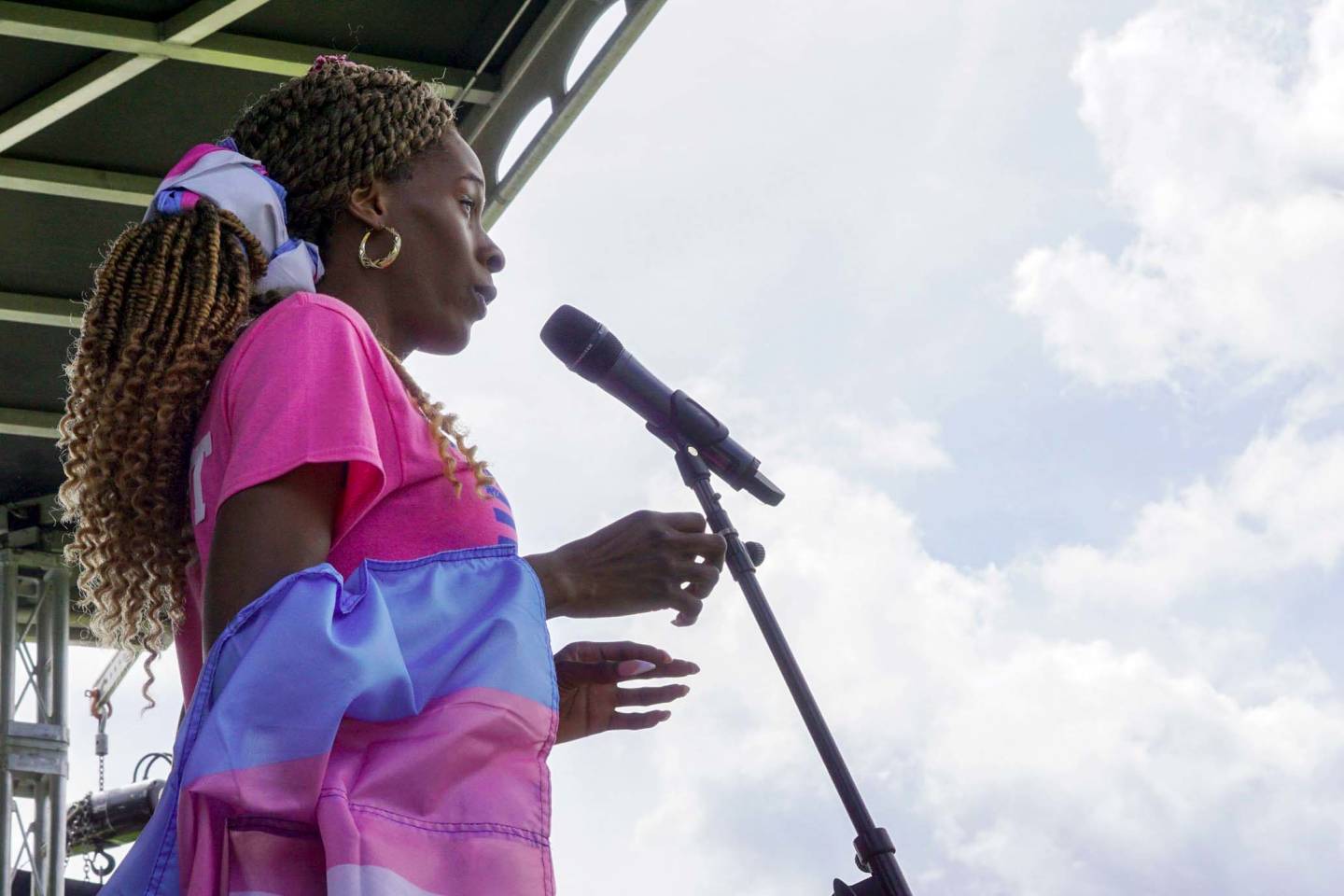‘It Was Just To Survive’: Trans Female Youth Face Greatest Risk Of Sexual Abuse And Exploitation

Chastity Bowick is the executive director of the Dorchester-based Transgender Emergency Fund of MA INC. She is speaking at the Trans Resistance March and Vigil at Franklin Park on June 12, 2021. (GBH News / Jenifer McKim)
Dreya Catozzi started selling her body for cash at age 17.
Born identified as a boy, Catozzi says she always knew she was female. She grew up in an impoverished family, was molested as a child and learned quickly that she had to take care of herself to stay alive.
“I figured out the game at a very young age,” said Catozzi, now 52. “I knew I needed money to pay rent. I knew I needed money to eat. It was just to survive.”
It is not an uncommon story for trans youth.
In Massachusetts and across the United States, trans females are disproportionately at high risk of sex trafficking and exploitation for a host of reasons connected to discrimination, family rejection and failures of government systems to intervene on their behalf. Many end up in the state child welfare system, where they can be mistreated, misidentified and ultimately homeless — putting them at greater risk for abuse.
In our series UNSEEN: The Boy Victims of the Sex Trade, the GBH News Center for Investigative Reporting has revealed growing evidence that, in New England and across the United States, there are likely thousands of male victims of commercial sexual exploitation and trafficking, far more than previously understood. It is also clear from our reporting that trans female youth, who were identified as male at birth, face the highest risk of becoming victims of the sex trade.
